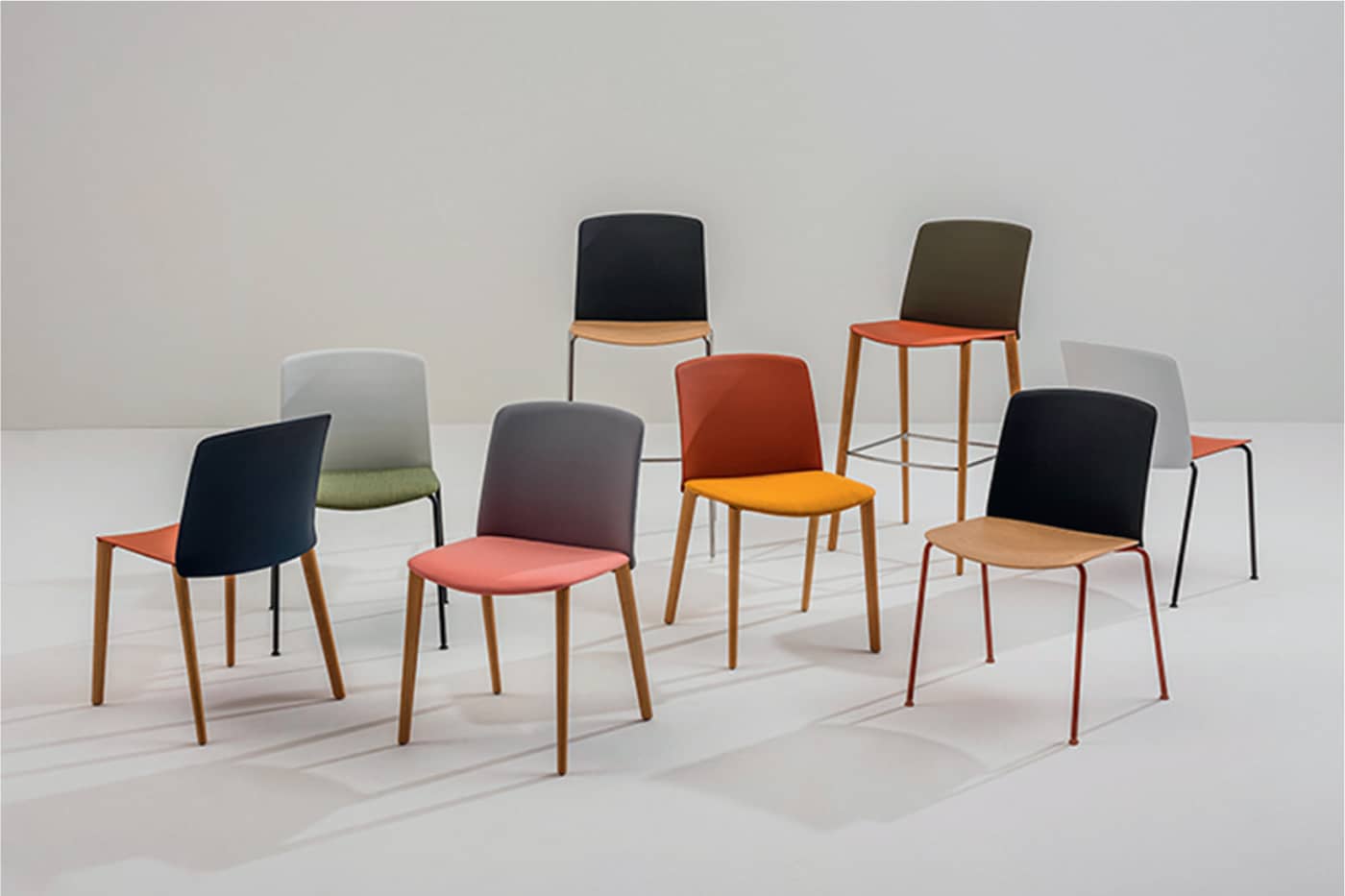88 Sustainability
A method of harvesting or using a resource so that it is not depleted.

Certifying Agencies
UL Certified
Green Building Challenge
The Lacey Act
Health Product
Declarations
Forest Stewardship
Council (FSC)
Cradle to Cradle
Intertek
Life Cycle Assessment
Declare
Level U.S. Green Building
Council
Healthier Hospitals
Mindful Materials
Living Building Challenge
Well Building Institute
The main considerations when designing a sustainable interior should be to mitigate the effects of climate change, reduce waste, and encourage the reuse and recyclability of materials. Designers should be aware of several factors that encourage the use of sustainable materials and products.
Healthy Environments
Spaces that can maintain improved air quality, efficient heating, natural ventilation, and correct acoustics, and promote healthier occupancy. This can be achieved by the use of low volatile organic compounds (VOC) emissions or toxins from furniture or products, and incorporating plants to offset carbon dioxide.
Energy Efficiency
Aims to reduce the amount of energy needed for heating, lighting, and appliances. From a product selection standpoint, this includes using energy-efficient lighting, as well as interior and exterior window treatments to offset natural heat gain, or conversely to take advantage of sunlight and solar panels. Ensuring proper insulation, floor assemblies, radiant flooring, and carpets provides thermal insulators at a building’s perimeter.
Waste Reduction
By recycling, upcycling, and repurposing materials, designers can reduce waste. Opting for synthetic materials that are made from recycled materials can also minimize and divert waste from landfills. In the cradle-to-cradle approach, waste material becomes new products, forming a circular loop.
Longevity and Flexibility
When selecting durable materials, choose quality over quantity. Life cycle assessment (LCA) is a methodology that evaluates the entire life cycle of a product, including extraction, production, transportation, processing, and waste disposal or recovery of materials.
Lower Environmental Impact
Choose materials with the lowest impact on the environment, such as wood, wool, and stone, and highly renewable materials like bamboo or cork. There are many third-party certifications, initiatives, and rating systems that exist in most countries that rank or reward projects or products with wellness declarations.

Interface is a leading sustainable flooring manufacturer, using 99 percent renewable energy and a minimum of 66 to 80 percent recycled content in their flooring products. It also publishes all ingredients in Health Product Declarations (HPDs). Each product has an Environmental Product Declaration (EPD) that evaluates factors based on full life cycle assessment (LCA).

Arper’s seating collection Mixu was designed in collaboration with Gensler with two goals in mind—designer customization and sustainability. Designed for disassembly, Mixu offers designers the ability to mix and match post-industrial recycled plastics, FSC certified woods, recycled steel and an infinite number of upholstery options all without any adhesives, staples or comolded materials.
